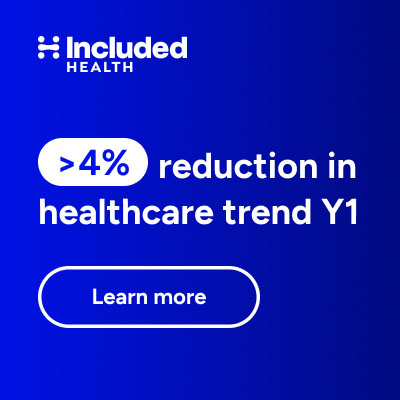
By CHINELO GRACE CHIGOZIE
The U.S. has a healthcare cost problem that everyone knows about but no one talks about openly. For decades, the same medical treatment has cost very different amounts. Hospitals down the street from each other might charge five times more or less for the exact same thing. Patients couldn’t find out the real costs ahead of time. Even many insurance companies didn’t know the actual rates. Two recent laws tried to fix this problem. The Hospital Price Transparency Rule came into effect in 2021. The No Surprises Act came into effect in 2022. These laws have two main goals. First, they need healthcare providers to share their real prices. Second, they aim to stop some unfair billing practices.
On paper, these measures should have transformed the market. Patients would “shop” for cheaper care. Providers would compete, driving down prices. Insurers would negotiate with real market benchmarks. But three years in, the impact is scattered and superficial. Compliance is inconsistent. Prices remain incomprehensible to ordinary consumers. In some markets, transparency has even led to higher prices. The main problem is that the laws don’t have strong enough punishments.
The Transparency Mirage
CMS is a government agency. It checks if hospitals follow the Hospital Price Transparency Rule. Hospitals can be fined $300 to $5,500 each day if they break the rules. The fine depends on the hospital’s size. That sounds serious until you consider scale: the average fine in 2022 was about 0.49% of a hospital’s revenue. For large systems with multi-billion-dollar budgets, it’s a rounding error. Many hospitals can easily afford the small fine and keep breaking the law. And many do. A CMS report from April 2023 showed that 70% of 600 hospitals followed the rules. But independent audits show a different picture. A July 2025 review of 2,000 hospitals found only 36% fully compliant, up from 24.5% five months earlier.
A November 2024 study found that 46% of hospitals did not follow all the rules. The patterns are the same everywhere. Hospitals share incomplete data. They create machine-readable files that are hard to use. They hide “shoppable service” lists in website folders. Search engines cannot find these folders. The No Surprises Act was meant to stop surprise bills for some out-of-network care. But it hasn’t worked much better. The law has stopped millions of surprise bills. But the dispute process (the IDR) has more cases than it can manage.
From early 2023 to mid-2024, people filed 1.24 million disputes. Forty-one percent of these cases are still waiting for a decision. Providers win most emergency disputes – about 85% of them. They often get paid more than what insurers first offered. This makes healthcare costs go up for everyone. The system needs tough penalties for insurance companies that are slow to pay or refuse to pay. Without these penalties, the system will stay clogged up forever.
Penalties Without Pain
Healthcare gets much lighter penalties than other industries. In banking, anti–money laundering violations can run into billions. Companies can be fined more than $50,000 each day for not disposing of waste safely. Violators can also face prison time. HIPAA data breaches can cost $1.5 million each year for every violation, plus extra legal fees. Healthcare price transparency penalties are smaller, slower, and more negotiable. CMS takes several months to fine hospitals after they break the rules. Only 14 hospitals got fined by late 2024. This happened even though thousands of hospitals broke the rules. No hospital lost its license. No hospital lost its Medicare funding for breaking transparency rules. Any CFO can do the math. The money saved by hiding prices is often worth more than the small fine they might pay. State efforts show what sharper enforcement might look like. Colorado bars noncompliant hospitals from certain debt collection practices. California has fined drug companies over $70 million. These fines were for failing to produce cheaper release of drugs. But these steps are uncommon and don’t work with federal rules.
How Loopholes Eat the Law
Hospitals don’t have to break the rules to neutralize them. Many hospitals follow the rules on paper. But they work against the real purpose of these rules.
They put pricing files online. These files use formats that don’t work well. These files are often inconsistent, incomplete, or mislabeled. This makes it impossible for patients to compare prices.
Hospitals block search engines from finding their pricing pages. This means only people who really search hard can find them. Listing “ghost” rates for services they don’t provide, muddying averages and benchmarks.
Some hospitals ask for personal information before showing prices. This goes against the rule that says prices should be public. But this practice is hard to catch and stop.
For consumers, this means confusing spreadsheets with hard-to-understand codes. They don’t get clear prices they can compare. Researchers and policymakers need standard data. This data would help them track cost changes. It would also help them study how well companies compete. But the lack of consistent standards makes this impossible.
Consolidation Cancels Competition
Perfect penalties might make all hospitals follow the rules. But transparency alone still won’t create fair prices. This is true when just a few big hospital systems control most of the market. Almost every U.S. city has too few hospital choices. In more than 80% of these areas, just one or two hospital groups handle most patients who need to stay overnight. In many regions, insurers are just as concentrated. In these markets, transparency doesn’t create competition. Instead, it can work like a price floor. If a dominant hospital sees its competitor charging more, it may simply raise its own prices to match. This is real. Similar effects have happened in other markets. For example, Denmark saw this after it required companies to share concrete prices. The consolidation trend is getting faster. Private equity firms are buying up practices. Physician practices are also joining larger systems. This gives providers more bargaining power. It weakens insurers’ ability to negotiate. This is happening even after the No Surprises Act.
Patient Behavior Won’t Save It
Price transparency laws are based on a simple idea. The laws assume that consumers will look up prices before getting care. Then consumers will choose cheaper options. This should drive down healthcare costs. In reality, only 10–13% of patients seek price information before care. There are clear reasons for this. Some are obvious – you can’t shop around during emergencies. Others are more complex – the listed prices don’t clearly show what you’ll actually pay. When patients do compare prices, they care more about other things. They focus on doctor advice, quality, and convenience. Price matters less to them. Sometimes, transparency makes patients pick more expensive doctors. This happens when patients think higher prices mean better care. This explains why New Hampshire’s imaging price tool didn’t work well. The tool was successful in some ways. But it barely changed prices. This only happened for a few basic services that were easy to compare.
Why Real Penalties Matter
Without penalties that change provider calculus, transparency rules will remain symbolic. For hospitals, the decision isn’t about right or wrong; it’s about risk and return. A $500,000 fine may sound big. But think about a hospital system that makes $5 billion each year. That fine is only 0.01% of their money. They could easily pay it from their marketing budget.
Real deterrence would mean:
Penalties proportionate to revenue, not static daily fines. For multi-billion-dollar systems, that might mean tens of millions for sustained violations.
Enforcement that’s fast and public, with compliance statuses posted and searchable. Hospitals that break the rules repeatedly should face real consequences. They could lose the right to collect debts from patients. They could also be kicked out of insurance networks.
The No Surprises Act should penalize insurers, too. Both hospitals and insurers should face real consequences. This happens when they delay payments or act in bad faith.
Some states have tested these ideas piecemeal. Federal adoption would need Congress to act. They would also need to stand up to powerful hospital and insurance lobbies.
The Political Drag
Industry lobbying is the quiet force keeping penalties soft. The American Hospital Association opposes stricter enforcement. They call it an “administrative burden.” They say it takes resources away from patient care. The American Medical Association has sued parts of the No Surprises Act. They challenged the dispute resolution process. Private equity groups get backing. They lobby to delay enforcement completely. They warn that “access will be reduced” if penalties hurt their business. Consumer and employer groups see an obvious problem. Without working transparency, employers cannot control healthcare costs. Patients also cannot make informed choices. Hospitals are often the biggest employers in their local areas. This gives them strong political influence. Consumer groups and other advocates can’t match this power. So the lobbying fight is unfair.
Lessons from Other Sectors
Other industries show how transparency can work when backed by credible penalties. Financial firms that misreport face fines in the billions and executive prosecutions. Environmental polluters face daily penalties that can bankrupt violators. In consumer goods, inaccurate labeling can lead to product recalls and class-action suits. The penalties are big enough. The enforcement is strong enough. This makes breaking the rules a real risk for businesses. Healthcare could copy other industries. It could use penalties based on revenue. It could need executives to sign papers promising compliance. It could post the names of rule-breakers online for everyone to see. These changes won’t promise lower costs in markets with few hospitals. But they would stop the fake “compliance” that uses hidden and incomplete data.
Conclusion
The U.S. healthcare system is not opaque by accident. Price secrecy helps big hospitals. It helps well-placed doctor groups. It sometimes helps insurers too. All these groups get more power when they negotiate. This happens because real rates are kept secret. The Hospital Price Transparency Rule and the No Surprises Act were meant to fix problems. They were written as corrective measures. But in practice, they work like speed limits with no police around. Careful people follow them. Bold people ignore them. The system won’t fix itself without real penalties. These penalties must make it cost more to break the rules than to follow them. Transparency will remain a talking point, not a tool. The U.S. will keep having the world’s most expensive healthcare. Patients will still not know what they will pay. They’ll have to wait until the bill comes.
Chinelo Grace Chigozie is a writer who explores how health and policy affect daily life.
Categories: Health Policy











